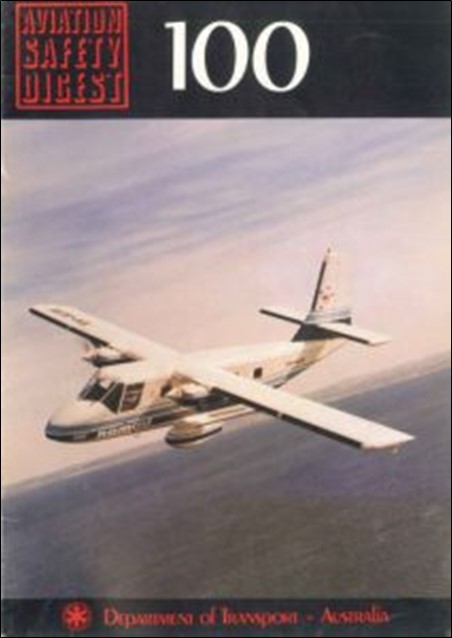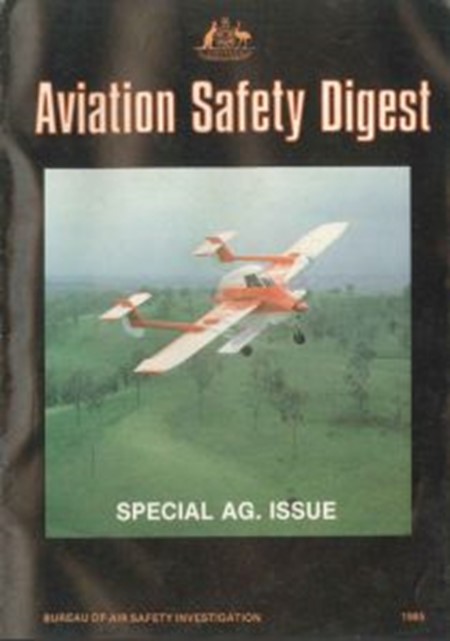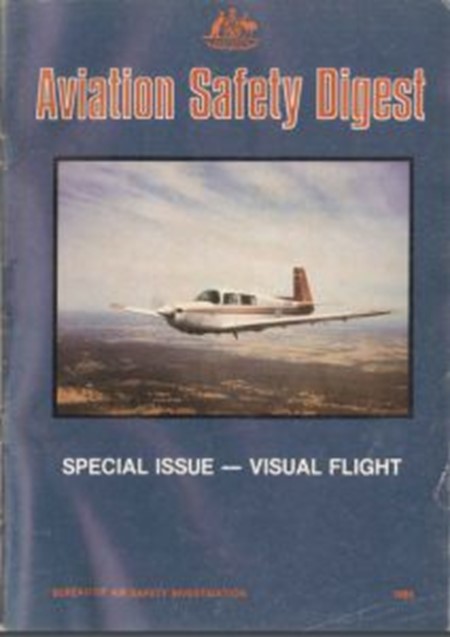|
|
||
|
||
|
Privacy Policy | Editorial Policy | Profit Policy | Join the Association | List of Members | Contact us | Index | Links |
||
|
Back Go to page: 1 2 3 4 5 6 7 8 9 10 11 12 13 14 15 16 17 18 19 20 Forward |
||
|
John Laming
Aeroplanes and other stuff. |
||
|
Contents.
|
||
|
STANGS and VAMPS
I was in the Moorabbin circuit area the other day, teaching a student how to do cross wind landings. The wind was right across the runway and there was enough drift to make it interesting. The student nailed the combination technique nicely and after several good landings, I sent him solo to practice what I had preached.
After watching his first few landings from the fence near the control tower, I decided to stroll up the road to the local CAA Field Office and bludge a cup of tea and a chat with a friend of mine who works there as an FOI. It turned out that he was away on the job, presumably keeping the industry on its toes, so I knocked on the door of one of his colleagues who was on my pilot’s course in the Fifties. This chap had flown fighters after graduating from Point Cook and our conversation turned as always to the good old days of hack, flick and zooming in the Air Force.
Wartime pilots talked of flying Spits, Beaus, Lancs, Stringbags and Mossies. These were Spitfires, Beaufighters, Lancasters, Swordfish and Mosquitoes. The young lady licencing clerk in the next door office must have thought we were two lanes short of a freeway, when she overheard the conversation turn to flying Goonie Birds, Tigers, Wirras, Swords, Stangs, Meat Boxes and Vamps. To decode that lot, ask any ex RAAF pilot over the age of sixty!
The tradition carries on with current generation service pilots who fly Draggies, Plastic Parrots and Herks, which I am told are HS748, CT4 and Hercules.
Amongst the military aircraft I flew were Stangs and Vamps, or more correctly, Mustangs and Vampires. The story begins with my arrival at the RAAF fighter operational training unit at Williamtown, NSW. With only 200 hours in my log book, I had already flown one hour on the Mustang and survived. Now let me introduce Flight Lieutenant Peter Middleton DFC. He was one of the fighter combat instructors on our course. I use the term instructor in general terms, because few of the staff pilots were Qualified Flying Instructors (QFI) and in any case our Mustangs and Vampires were single seat aircraft. One read the Pilots Notes, climbed into the cockpit and flew solo. |
||
|
|
||
|
Middleton was tall, sported an impressive moustache and looked every inch the true fighter pilot image. An experienced combat pilot, he had just returned from flying Meatboxes (Gloster Meteor twin engine fighter bombers) in Korea. He held a degree (or whatever) in martial art skills and was well respected for obvious reasons. He also owned a dashing looking bone dome (crash helmet), which was painted with blue and white polka dots. I suspect he nicked it from the Yanks in Korea, as bone domes were not then standard issue in the RAAF.
It was to be my first sortie involving formation flying in the Mustang and the briefing was concise and to the point. After engine start, I was to follow my No 1 (Middleton) to the runway, observing radio silence after the initial radio call to check radio serviceability. It was to be a formation take off, battle climb to 15,000 ft, then general formation practice. This was to be followed by a line astern tail chase in VMC (hopefully). Depending on the weather, we would return to land off the standard buzz and break. If the weather was marginal then we would carry out a formation VHF/DF instrument approach, culminating in a Ground Controlled Approach (GCA) to 200 ft. With only limited experience I hoped that I wouldn't have to test my instrument flying skills whilst in tight formation!
During the walk around check of my aircraft, I noticed that Middleton had already strapped in to his Mustang and was obviously impatient to get under way. He wore a RAAF issue red silk scarf (in case one needed to attract attention if you were shot down) and real aviator’s sunglasses. Now in the cockpit and hastily doing pre start drills, I pumped the primer a couple of strokes too many and was rewarded for my inexperience at starting the Rolls Royce engine by the sight of terrifying tongues of flame licking from twelve open exhaust pipes. Despite starting many Rolls Royce Merlins since that day, I never failed to get the shivers when the bloody things caught alight. This was despite the fact that the flames were more spectacular than dangerous.
|
||
|
|
||
|
I returned Middleton's thumbs up, indicating I was ready to taxi and with a burst of throttle, he swung out of the flight lines. When taxiing the Mustang, Middleton preferred to raise his seat to full extent, so that he could see over the top of the bullet proof windscreen. With one gloved hand resting on the canopy frame, his scarf fluttering in the slipstream and his oxygen mask hanging loose to reveal a fierce moustache, Middleton looked like the original Tall in the Saddle cowboy.
I followed a respectful distance behind, most of the time losing sight of his Mustang despite my obligatory weaving of the nose. I decided to emulate Middleton and jacked up my seat to full extent in order to (a) look cool and (b) to obtain better forward vision. Within seconds I had nearly ground looped the Mustang as I attempted to apply corrective rudder and brake to control a rapidly developing swing. The Mustang was built for six footers and to reach the rudder pedals I needed a well-padded cushion behind my back. The seat was fixed horizontally and I already had the rudder pedals fully extended towards me. Now with full up seat I could only just reach the pedals with the tips of my toes and as for depressing the brakes, then forget it! I desperately unlocked the seat raising lever and with a jolt the seat hit the lower stops, causing me to look like Chad (that mysterious cartoon character of years ago, who was pictured with his eyes and long nose peering over a wall). I now had no forward vision beyond the gyro gunsight, although on the positive side I at least had limited rudder and brake control.
My pride somewhat dented, I managed to stop the aircraft at an angle to the taxiway and claw my way via the seat raising lever to a respectable position in the cockpit as befitted a cool trainee fighter pilot. Middleton, whose callsign for the flight was Red One, had been blissfully unaware of the minor drama which had unfolded behind his tail and had received a green light from the control van to line up on the runway for his run up. He was in the course of opening up to high power as I taxied behind him, in order to position myself on his right wing for the formation take off.
To my dismay the slipstream from Middleton's propeller hit the tail of my Mustang, causing the beast to weathercock viciously towards the tail of his aircraft. I almost dislocated my toes in jamming on full right brake to stop the swing and Red One never knew how close the 4 bladed propeller came to clobbering his rudder. At this stage I began to regret not volunteering for a posting as second dickey on a Dak (copilot DC3). So much for checking all clear behind before run up, I thought grimly, but one never criticizes a Red Leader who has a degree in martial arts. Not to his face, anyway.
At this point, perhaps I should briefly explain that the engine run up on a Mustang includes checking the propeller operation at high RPM, testing the supercharger controls, magneto drop check, noting temperature and pressures with an especially careful note of the glycol coolant temperature. On the ground, where airflow through the engine radiator is reliant mainly on the propeller slipstream, it was important to be pointing into wind to keep the coolant below 110 degrees centigrade. If over that temperature, the chances were that on take off, the coolant would boil and eventually cause engine damage. Such were the vagaries of powerful liquid cooled engines. Battle damage to the coolant system on these Rolls Royce Merlins invariably meant engine seizure. The options then remaining were to abandon the aircraft by parachute, or to attempt a crash landing.
|
||
|
|
||
|
Now back to the story, where I had now closed the canopy, set the park brake and commenced the run-up. With only one Mustang ride under my belt, my cockpit checks were still hesitant and perhaps a trifle longwinded. Red Leader clearly thought so anyway, because when we received a steady green light from the control van, he waved his gloved finger in a circular motion at me, which was the signal to increase engine power to 30 inches of manifold pressure before commencing the take off.
The canopy of Middleton's Mustang was closed, the flashing arc of the huge propeller solidified at 2000 RPM and the man was ready to roll. I was still trying to scratch an itch in my bum and apart from checking all clear behind before run up, (my old Point Cook instructor would have been proud that I remembered that one), I was nowhere near ready to take off. I gave Middleton a furtive and somewhat embarrassed thumbs down to indicate that I was not yet ready and went heads down to scan more instruments and test more switches.
Seconds later, a sense of foreboding made me look across to Red One, where I saw that Middleton now had his canopy open, oxygen mask undone and was glaring at me revealing bared teeth below his black moustache. He again furiously waggled his gloved finger in a circular fashion indicating he had been sitting on "hack" power (a chopping motion of the hand to indicate brakes release for take-off) for some considerable time - probably with rocketing coolant temperatures. I gave another regretful thumbs down and undoing my oxygen mask, I attempted to convey via lip language that I needed a little more time to complete my checks.
|
||
|
|
||
|
This thoughtful gesture on my part clearly upset Red One, because he mouthed an obscene word or ten in my direction, clipped his oxygen on, slammed the canopy shut and ruddering furiously to counteract the torque of a probably over-boosted engine, he roared off down the runway. With his Mustang barely inches off the deck, I saw his undercarriage retract inwards in a classical "scramble" fashion. With the dust from Middleton's departure still settling, I had just given my harness a final tweak, when I heard a voice which sounded like "get your arse into gear Red Two". I wondered momentarily if I should acknowledge the call, but could not think of an appropriate phrase, especially as the transmitter was an officer (maybe not a gentleman though) with a martial arts degree.
The controller in his little van had by now tired of giving me steady greens and as radio silence had been effectively broken by my leader's impatient remark, I was cleared for take-off by radio, finally catching up with Middleton around 5000 ft. There were no niceties, no leisurely practice at pansy formation changes. No time to marvel at the beautiful view of a Mustang close up, with the Pacific Ocean and white cumulus clouds as backdrop. Just a hard voice on the radio saying "go line astern, Red Two and stay on my tail". I dutifully did a text book drop back and slide sideways, until Middleton's Mustang filled my windshield.
I called that I was in position and barely had the words been uttered, when the Stang nestled so sweetly in my gyro gunsight simply disappeared upwards. Astonished at this apparent miracle, I swivelled my head in all directions, ripped into steep reversal turns, looked up through the canopy and generally felt a right twit for losing my leader so quickly. All of my previous tail chases had been in Wirraways with the front bloke being an amateur like myself. After flying in circles trying to spot my leader, I decided he must have gone home. There was no point in wasting a nice day, so I found a fluffy cloud and joyously flung my aircraft directly at it, rat-tat- tatting into my oxygen mask and generally playing Red Barons. I had just completed a 250 knot lazy barrel roll around my cloud, when a voice cut across the air with, "Fight, you yellow bastard, fight!". As my call sign was actually Red Two, I felt that the owner of the voice on the radio was a bit offside, until I looked into the rear vision mirror and saw a large blue spinner. The spinner was attached to a silver Mustang and behind the gunsight the occupant of the cockpit wore a blue and white spotted bone dome and I swear I saw a glimpse of red silk scarf.
After the initial shock and embarrassment, I decided to do serious battle and flung my Mustang all over the Williamtown training area trying to get Red One off my tail. I remembered once reading Pierre Closterman's book, "The Big Show", where flying a Tempest, he turned inside a German Focke Wulf 190 fighter by dropping a few degrees of flap to lower the stall speed - just enough to get the required deflection for firing. I hauled around in a limit turn, felt the Mustang shudder at the stall onset, groped for the flap lever to drop the flap that few critical degrees and to my chagrin, flicked inverted. I had missed the flap lever and inadvertently selected the adjacent carburettor control lever. Upside down in the flick roll, I caught a momentary glimpse of Middleton's Mustang rapidly rolling away from me to avoid a collision. He disappeared from view and I clearly remember the lines of his flap on the underside of the wing. They were 10 degrees down and I remembered instantly that Middleton had fought in Europe.
They were happy, carefree days at Williamtown. News of pilots being shot down in Korea were received with some misgivings, but we felt invincible and relaxed in the knowledge that it couldn't happen to us. I saw a spectacular prang while watching a twelve Vampire formation take off. The take off was done vic formation, with the second, third and fourth formations rolling at 10 second intervals. An aircraft in the last formation was barely airborne and as the gear retracted, was caught by jet wash from the preceding aircraft. It sank back onto the runway on its belly and broadsided across the grass strip with great clods of dirt and dust being kicked up by the jet blast from its exhaust. The aircraft stopped within a hundred yards and I thought I saw a flash of flame in the cockpit area as the pilot hastily wound the canopy back and exited stage right. In fact the flame was not fire at all, just the pilot's bright red survival scarf. Damage was slight and the Vampire was flying within a week. The pilot escaped unhurt, but within a few weeks was posted missing believed killed following a midair collision in cloud with a Mustang. Pieces of wreckage from both aircraft were later washed up on the shores of Morna Beach near Newcastle but the pilots were never found.
After 30 hours on the Mustang I became quite competent on the aircraft,
with respectable scores on air to ground gunnery, rocketry and dive
bombing. The course allowed for just one hour of night flying and that
really did test our handling skills. With the canopy open, the forward
vision could be improved whilst taxiing
My one night flight was uneventful. We were briefed to climb to fifteen thousand feet and generally get accustomed to the sensation of night flight in a Mustang. Following that, we had to descend into the circuit and carry out a few touch and go landings, however, the lack of forward vision on my first night take off put the wind up me and I decided to do one landing only - the final one. On a previous course, a new pilot lost forward vision on a night take off. Following several wild swings, he closed the throttle and abandoned the take off run. The Mustang careered into trees at the far end of the aerodrome shedding various parts including the two wings. The cockpit remained relatively intact and the pilot was shaken but unhurt. The aircraft was a write off, but the accident did no harm to the pilot's career as he eventually reached Air Marshal rank! Accordingly with that accident firmly in mind, I flew up and down the coast with the lights of Newcastle in view until my hour was up. There was no way I was going to stretch my luck by carrying out touch and go landings!
During the climb I had a minor fright when I felt hot air coming from somewhere around the throttle quadrant and convinced myself that where there is heat, there may be a potential fire. Fortunately I was wearing gloves which protected my wrist but it was not pleasant feeling. After I did my one landing, I realized that the previous pilot had left the cockpit heat selector to full on and I had failed to notice this during the night pre start drill.
|
||
|
|
||
|
Midway though the course we were given the Vampire MK 30 Pilots' Notes to read. There was no engineering course on the aircraft, although we received a useless lecture on the Vampire fuel pump. I recall something about a swash plate incorporated in the said pump, which if it failed would cause the engine to flame out. Precious little else was passed on in the way of how to fly a Vampire, so I knew a bit about swash plates, but SFA about high Mach number handling characteristics. On two previous courses, three new pilots had been killed when their Vampires speared in vertically following high altitude manoeuvres involving aerobatics and practice interceptions. There were no ejection seats on the early Vampires and it was impossible to abandon the aircraft at high speeds. The problem was caused by compressibility shock waves over two engine air inlets on the fuselage immediately behind the canopy. These air intakes known as Elephants Ears were a modification to improve engine efficiency in the Rolls Royce Nene engine. Beyond about Mach 0.80, shock waves would form on the curved intakes, affecting the smooth airflow over the tailplane. The loss of elevator effectiveness would show up as an ever increasing nose down trim, exacerbated by the increasing speed in the subsequent dive.
If the pilot was too slow in closing the throttle and extending the dive brakes to prevent further speed build up, it was curtains, as the Vampire would pitch over into a vertical dive. Later aircraft were modified by putting the air intakes under the fuselage, which apparently cured the shock wave problem. Both the modified Mk.31 and dual seat Mk.33 Vampires then exhibited a strong pitch up change of trim on reaching Critical Mach, which of course slowed the aircraft naturally. Eventually ejection seats were also fitted, which gave one a sense of relief.
A recent book by Group Captain Brian "BlackJack" Walker, who test flew these early Vampires following the fatal accidents, described how he climbed to 40,000 ft and deliberately dived at high speed to investigate the reason for the compressibility problem. In discussing this experience he wrote, "I put it into a very steep dive, as steep as I dared, with not too much power, about three quarters, because if anything was going to happen I wanted it to happen fairly quickly. I soon found out. Once the aeroplane went over Mach 0.8, the nose got heavier and heavier and the aeroplane kept on endeavouring to go past the vertical and the controls were largely ineffective. So I closed the throttle and put on the dive brakes immediately and this would have been around 27,000 ft. The aeroplane had to be got out of a very sticky situation....It was pretty close and as the characteristics were so different to the English Vampire at high Mach numbers, it seemed to me it must have something to do with those wretched Elephants Ears on the upper surface of the fuselage."
Now with an instructor leaning over the cockpit to show us how to start our first jet engine, we were sent off solo, with instructions not to go beyond Mach 0.75, lest the dreaded compressibility lurgy get us. Initial climb speed was 290 knots, to be attained as soon as possible after wheels up. This was a wonderful excuse to hold down at tree top height after take off until hitting 290 knots. It was good fun at the time, although common sense should have dictated that it would have been prudent to climb a little more steeply initially, to allow a safer ejection or bale out altitude in case of engine failure.
My overriding recollection of the single seat Vampire was the fantastic 4000 fpm rate of climb and the absence of engine noise, particularly after the Mustang. Apart from a strong nose up trim change on selecting full flap, the landings were easy. It was the first nose wheel aircraft that I had flown and one had to watch for tail scrapes if the aircraft was held off too high. A late go around from a long float could be dicey, as the turbine was slow to wind up to take off power from idle. The aircraft would mush just above the runway in a no man's land of high induced drag, flaps at barn door setting with the pilot wishing he had eaten baked beans for breakfast to help with the thrust! Eventually the Jet Pipe Temperature needle would head for the red line as the turbine would rumble its way through several potential compressor stalls on the way to 12,000 rpm before the Vampire would be up and away.
One experience I had of the slow spool up characteristics of those early gas turbines was in 1960, when I had to ferry a Group Captain from Laverton to RAAF Base Richmond in a dual seat Vampire Mk.33. He was a large man who had some difficulty fitting into the right hand seat. There was much heaving on parachute and ejection seat straps and some un-officer like language as oxygen and radio leads became entangled around his bone dome. The weather forecast for Richmond indicated dense cloud en route, with rain for our arrival.
With external fuel tanks fitted under the wings, there was enough fuel to get to Richmond and if necessary divert to Williamtown fighter base with perhaps 15 minutes fixed reserve. As we climbed through 25,000 ft en route Laverton to Richmond and in heavy cloud, the VIP in the right hand seat clutched his head and complained bitterly of a severe headache. This bitching occurred again in the cruise and I murmured sympathetically. Approaching Canberra at 31,000 ft, I was having my own troubles with precipitation static causing squealing noises on the VHF and rendering the radio compass as useless as the proverbial whatsits on a bull.
The Group Captain was getting very annoyed and testily knocked my hand from the ADF switches whilst shouting at me through the intercomm to stop the racket coming through the earphones. Again he complained of a headache and I suspected he might be suffering from lack of oxygen flow. Approaching Richmond, the tower advised us of low cloud and visibility half a mile in heavy rain, but that a Ground Controlled Approach (GCA) to 200 ft was available. I knew that the GCA radar was prone to losing the target due to rain attenuation and decided it would be safer to divert from overhead Richmond at high altitude to arrive at Williamtown with reserves intact. The Group Captain, who had quietened down and was content with mumbling into his oxygen mask, suddenly came to life. He demanded that I attempt the GCA, as he had an important engagement that day. I tried to explain that the weather was bad news and that we could be critically short of fuel if we failed to get in first go.
The Group Captain was normally a most pleasant chap to work with, but his irrational manner throughout the flight reminded me of a fighting drunk. I reluctantly went along with his demands and we pitched over from 31,000 ft into a 4000 fpm initial rate of descent. I mentally went over the missed approach procedure as we were guided by GCA on to final approach. At 500 ft, GCA advised that visibility had dropped to under half a mile, with indeterminate cloud base. The missed approach required an immediate left turn through 90 degrees and I remembered that with external tanks fitted, the landing gear had to be selected up without delay otherwise the gear flipper doors would not close. This was because of suction in between the gear doors and the curved side of the adjacent external fuel tank.
At 200 ft, the controller gave us a slight heading change and advised that as we were now at the minimums we should look ahead and land visually. He was clearly an optimist because I was unable to see anything due to the heavy rain. The time had come to give it away and exit stage left. As I opened up to climb power, the Group Captain grabbed the control column, closed the throttle, shouting that he had the runway to the right. We went into a high rate of descent, as I realized that what he thought was the runway was actually the long parallel taxy-way! At this point I thought bugger this for a joke and pulling aircraft captain rank, firmly told him I had control, "Sir".
Advising ATC that we were diverting, I pushed the throttle fully open and began a left climbing turn, whilst retracting the gear and flaps. The engine took ages to wind up from the idle closed throttle setting that the Group Captain had left me with and there was much loud rumbling and rocketing jet pipe temperatures. The port red gear warning light stayed on, so I adjusted the nose attitude to keep the speed back. It was the first time I had done an overshoot with external tanks fitted, particularly in cloud and with an irate VIP sitting next to me. I was locked on instruments in a climbing turn, when I became aware of my passenger pushing on the stick and saying, "Watch the speed man, watch the speed". I pointed out to him through gritted teeth that the bloody flipper door was not closing and that I had to keep the speed back to minimize the external tank suction effect. To my relief the red light went out and we soon accelerated to 290 knots as we passed overhead the Richmond NDB en route to Williamtown.
Sydney ATC asked for our ETA at Williamtown and I muttered that I didn't have a clue, just kindly give me an immediate clearance to cruising altitude. As we climbed rapidly through 20,000 ft the Group Captain began his head shaking and again complained of headaches. He had his problems and I had mine, in particular rapidly diminishing fuel contents. Ten minutes later we got our descent clearance and with the fuel gauges hovering near empty we were vectored into yet another high altitude VHF/DF let down. We became visual at 1500 ft and were soon on the runway.
As I taxied towards the tarmac area, the canopy began to mist over with condensation. I was therefore grateful when the Group Captain volunteered to stand up in the cockpit and guide me to the parking spot. He undid his harness and attempted to stand up, only to be dragged back, garrotted by the radio leads attached to his bone-dome. His curses were terrible to hear and I silently thanked the Lord that the sound of the Nene engine drowned the muffled sound of my hysterical laughter into my oxygen mask.
On the tarmac and with the engine winding down, I suggested to the Grouper that we could refuel and have another go at getting into Richmond in an hour or so. "Forget it", he said, "I'll catch a TAA flight to Sydney and get a train to Richmond". With that we went our separate ways.
Whilst the oxygen system was being serviced, an engineer found that the passenger side oxygen hose had completely separated from its supply box. During strapping into the small cockpit of the Vampire at Laverton, the Group Captain had inadvertently pulled his oxygen hose from its supply socket. When he tested the mask for correct flow, all he inhaled was fresh air! A less fit man would have been unconscious at our high cruising altitudes, but in this case the effect of anoxia caused only severe headaches and irrational behaviour.
Back now to the fighter course and fuel endurance was always a problem with the Vampire because on landing after a one hour sortie, there was less than 10 minutes of fuel remaining in the tanks. I recall reading in "Flight" magazine an amusing anecdote where a visiting American Super Fortress pilot in England was offered the opportunity to fly a Vampire. He had been used to flying 10 hour trans Atlantic flights in the B29. On being briefed that the endurance was just over an hour to empty tanks, he became quite worried and remarked that as far as he was concerned he was in a Mayday situation even before starting the engine!
I enjoyed flying the Vampire and especially the exhilarating sensation of flying at 350 knots at 50 feet above the sea near Seal Rocks during low level navigation exercises. I look back in time and thank the Lord I didn't hit any sea gulls at that speed. In terms of pure flying skills both visual and instrument flying, I had no problems with the Mustang and Vampire. This was due to the first class training which we received on our pilot training course. Simulated instrument flying on Wirraways was done with the use of amber window screens and polaroid goggles, which gave excellent simulation with no peripheral vision. We were taught instrument flying shortly after first solo and my Wings test at Point Cook included, amongst other things, an 8 turn spin on instruments. This training stood me in good stead when many years later, I had to carry out a steep emergency descent in cloud at night, following a pressurization problem in a Boeing 737. But that is another story.....
|
||
|
The World Health Organization has announced that dogs cannot contract Covid-19. Dogs previously held in quarantine can now be released. To be clear, WHO let the dogs out.
|
||
|
Crash Comics.
Back in the 1960s, 1970s and 1980s, a must read for everyone who was involved in aviation in Australia was the Aviation Safety Digest.
Universally known and loved throughout the Australian aviation industry as the ‘Crash Comic’, for nearly forty years the Aviation Safety Digest was an icon.
During the austere days of war, civil aviation in Australia had been cut to the bone, strategic airlines and outback medical services being virtually the only exceptions. But with the war’s end in August 1945, civil flying quickly resumed and, perhaps more than any other public activity, was plagued with the difficulties of transitioning from the exigencies of war to the different but equally demanding disciplines of peace.
The mood of the times was hardly an ideal one in which to develop a high standard of conformity to operational procedures. Pilots taking up civil flying were for the most part men freed from the constraints of service life who had sharpened their skills in the climate of action against the enemy and had been thoroughly conditioned to calculated risk-taking. Added to this was the fact that ex-disposal aeroplanes, particularly Tiger Moths, Dragons and Ansons, could be had almost for a song and were available in quantity. Small wonder then that something of a cavalier attitude tended to prevail as newly-founded commercial and private operations began to proliferate. Inevitably the number of aviation accidents began to rise.
Because of the difficulties in which the industry found itself, the
newly structured Department of Civil Aviation (DCA) saw the need to
examine the problem in depth, and in 1946 an Accident Studies Branch was
formed as part of the then Directorate of Air Navigation. As it set
about gathering information from which to develop safety standards, this
Branch found that the relatively small number of accident reports
available made it difficult to
Through the new incident system many deficiencies came to light, but at first only those directly associated with them knew of the consideration a report had been given, or of the resulting action. Before long however, it was evident that there would be benefit in publicising these findings for the edification of the whole industry and so it was in March 1948 that the Department’s Monthly Summary of Incident Investigations consisting of six roneoed pages stapled to a blue paper cover first found its way to the offices of airlines, charter and aerial work operators, and aero clubs. Limited by an extremely tight budget, only 400 copies were available for this initial distribution but even this did not daunt the prophetic note of its editorial: “…it is felt that the educative data from such reports would prove most informative and beneficial if accorded a wider circulation.”
How right it was! Interest in the summary grew and in 1950 its content was expanded to include local and overseas accidents and with these changes the new title Summary of Accident and Incident Investigations was adopted.
Not long after this time, the Accident Studies Branch and the Department’s Accident Investigation Branch, both of which had been separate entities, were merged to form the group which later developed to become the Air Safety Investigation Branch (ASIB). The merger added impetus to the need for accident prevention through safety education and in June 1953 the Accident and Incident Summary as it had come to be known, found fulfilment in a new publication, printed letterpress with a yellow board cover under the inspired title Aviation Safety Digest. The first issue offered a greatly improved type of presentation and for the first time was distributed individually to all licence holders. “For some time we have been of the opinion that the wide interest displayed in the Accident and Incident Summary merited better presentation of this material,” explained the Foreword. “Our efforts have resulted in the Aviation Safety Digest, the first edition of which we now present.”
Though from the first the Digest was to be issued quarterly, its production schedule soon ran into difficulties. At that stage the preparation of articles was the responsibility of the normal air safety investigation staff – there was no Digest staff as such. Not long after Digest No 3 had been distributed the first Australian-registered Viscount crashed during a training exercise at Mangalore. The subsequent investigation taxed the resources of the Branch to the limit, and it was almost a year before the next issue of the Digest – a small edition containing only the Mangalore accident report – was in the hands of its readers. A series of other fatal accidents requiring major investigations followed, with the result that again more than 12 months were to elapse before the Branch could recover sufficiently to produce Digest No 5 in February 1956.
From that time on production became reasonably regular but as the Branch became increasingly taken up with day-to-day investigation work, those responsible for the Digest were forced to depend more and more on content adapted from overseas safety publications. So much so that by 1959 the comment most often heard on the Digest was ‘not enough Australian stuff’. Even so the presentation of the magazine continued to improve and in Digest No 14 the traditional yellow board cover was dropped in favour of glossy art paper. The Digest was beginning to look like a magazine!
As issue succeeded issue the rapidly expanding aviation industry was demanding still more of the Branch’s effort, and it was finally realised that the only solution to the problem of issuing the Digest regularly was to appoint specialist staff to produce the magazine. Accordingly, in 1964, the Digest gained its first full-time editor, Macarthur ‘Mac’ Job, his first task being to make good the four-month production lag that had developed over the years and to ‘Australianise’ its content. Emphasis was also given to including effective illustrations to support and enhance the message of the text.
By 1967, in response to many requests from readers and with the increased safety information available from a burgeoning aviation industry, the Branch felt the time had come to increase the frequency of the Digest from four to six issues a year. To cope with the increased workload an assistant editor was appointed and appropriately the new policy was announced in Digest No 50. “With this, its fiftieth issue, Aviation Safety Digest takes a further step forward in serving the interests of air safety…” explained the editorial, “…the Department hopes the publication will be able to more effectively fulfil its function…and that all who have a part to play in the operation of aircraft…will strive for operations that are as accident free as it is humanly possible to make them.”
All this time the number of licence holders receiving the Digest, free of charge, had been steadily growing. By the beginning of 1972 the production run of copies had reached a point where a change from letterpress to offset printing became economical. This immediately gave scope for greater flexibility in lay-out with the result that more imaginative design and illustration began to characterise the Digest from issue No 79 onwards. The effectiveness of the presentation and content gained international recognition in 1972 when the United States Flight Safety Foundation named the Digest as its ‘Publication of the Year’. A further step in the evolution of the Digest was taken in 1973 when, with the issue of Digest No 86 the standard international A4 size was adopted in place of the original smaller format. Although, for a variety of reasons, the Digest had some difficulty maintaining its objective of six issues per year, there was some consolation that a typical issue of the Digest contained almost twice as much copy as did Digest No 50 and its contemporaries.
The Digest carried on at its usual high standard. Of particular note, 1976’s Digests No 96 and 97 were ‘Special Reference Editions’ in which articles from previous Digests, suitably updated, were collected in an attempt to, as the editorial put it, “…not only meet the needs of pilots new to the industry, but also serve to refresh the understanding of those practising pilots who have forgotten some of the classic, oft-repeated operational situations which can be accidents in the making.” Digest No 100 of 1977 provided a chance to look back at what had been achieved over the previous 24 years, from which the foregoing material has been taken.
Not long after however, a blow came when long-serving editor Macarthur Job, who had done so much to improve the Digest, left the Department. With Mac’s departure came a subtle change in style and balance. Although still containing much good and useful information the Digest became drier, lacking the consistency of Mac’s unique ability to write in a way that spoke to everyman – to get the safety message across in an enjoyable yet pungent manner.
Budgetary problems also began to affect the Digest. In No 114 of 1982 an editorial by the new Secretary of the Department announced the creation of the Bureau of Air Safety Investigation as an independent entity within the Department, to which the Digest would belong. He also stated: “Finally, it has been brought to my attention that there have been statements by various sources that publication of the Aviation Safety Digest is to be discontinued. I hasten to assure you that this is not the case.” He went on to explain, “The frequency of the magazine has been restricted in recent times by difficulties in recruiting and retaining suitable personnel within the Bureau of Air Safety Investigation. The consequent staff shortage resulted in a situation where the exigencies of day-to-day accident investigation had to take precedence, temporarily, over the requirements of the Digest.”
Digest No 117 of 1983 introduced a new feature which would remain part of the Digest until 1988. This was a section containing a Summary of Aircraft Accidents – short descriptions of all accidents that either occurred or had reports finalised in the previous quarter (the Digest having once again settled on being a quarterly issue).
Nineteen-eighty-six saw another major change to the Digest when it was transferred from BASI to the Flight Standards Division of the Department, ending its thirty-two year association with the safety investigation branch. A final editorial by the Director of BASI in No 128 explained “The…Digest was part of the Bureau’s safety education unit. With the transfer of this unit to Flight Standards it will be possible to achieve better co-ordination of regulatory and safety education functions by having both under the control of the one division. It is also important that the Bureau should not be seen to have the dual role of investigator and educator.” Prior to the transfer, the Bureau also produced a special on Visual Flight.
Some of the difficulties of the previous years were overcome when David Robson was appointed as the new editor from Digest No 131 of Summer 1986/87 with a promise to “make the magazine more positive, more constructive and more readable.” The Digest took on a new style and focus. A major step was the issue of well-received specials The Human Factor and Gliding in 1986, and in 1987 the US Flight Safety Foundation again awarded the Aviation Safety Digest its best publication award. The editorial recording this award also commented, “Equally important was the news from W.A. that the Digest is so well regarded that it is hung on a string in the ‘loo’.”
The Spring of 1988 issue of the Digest, No 138, saw the announcement of the formation of the Civil Aviation Authority, under which the Digest would continue to be produced – and also the departure of editor David Robson. The editorial in No 139 reported on the results of a readership survey. In contrast to the results of an earlier survey in 1978 when 63% of readers surveyed responded, only 61 returns were received from 40,000 questionnaires distributed. The editorial noted that “This may be accounted for by the comment offered by one respondent on a photocopy of the survey page. ‘I don’t like cutting up my Digests’.” The editorial also announced that feedback had been received that readers missed the Summary of Accidents section and that BASI would be producing their own journal which would in the future be distributed with the Digest.
It could be said that the separation of the Digest from its roots in the air safety investigation organisation sowed the seeds of its eventual downfall. The Digest was no longer the ‘crash comic’ that was known and loved. Its home in the Civil Aviation Authority, an organisation becoming more and more focused on economic matters, did not sit easily. A succession of editors, first Al Bridges for two issues and then Roger Marchant did not help matters. Finally, thirty-eight years of service to the industry came to an end in 1991 when a terse statement by the General Manager, Safety Regulation and Standards Division in Digest No 150 announced that the earlier readership survey “…indicated inadequate support to warrant [the Digest’s] continuation…”, and the abrupt end of the Aviation Safety Digest.
The editorial for that final issue did perhaps have the last word by quoting from the acceptance speech of one of the winners of a 1991 photographic competition organised by the Digest. Of the Digest, Lindsay Stepanow had this to say: “…as for the Digest, it’s been a constant with pilots over the decades. Rules, charges and aeroplanes may change over the years, but ASD has always been there. It dispenses advice that on occasion may seem obvious (sometimes you think ‘Bloody fool! How’d he get his licence?’), but most of the time you think ‘Gee, I’m glad someone told me about that before it happened to me’. The magazine gives you more of a chance to combat the cruel tricks that Fate and Nature can play, and for the non-professional pilot, whose experience and currency levels may be variable, it is a way to acquire constant updating of aviation knowledge, particularly through the hard-earned experience of others.”
If you want to relive those days and read some past editions, you will find the lot HERE
|
||
|
Whatever you do, always give 100% - unless you're donating blood.
|
||
|
|
||
|
|
||
|
Back Go to page: 1 2 3 4 5 6 7 8 9 10 11 12 13 14 15 16 17 18 19 20 Forward |
||

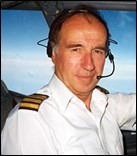
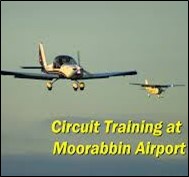
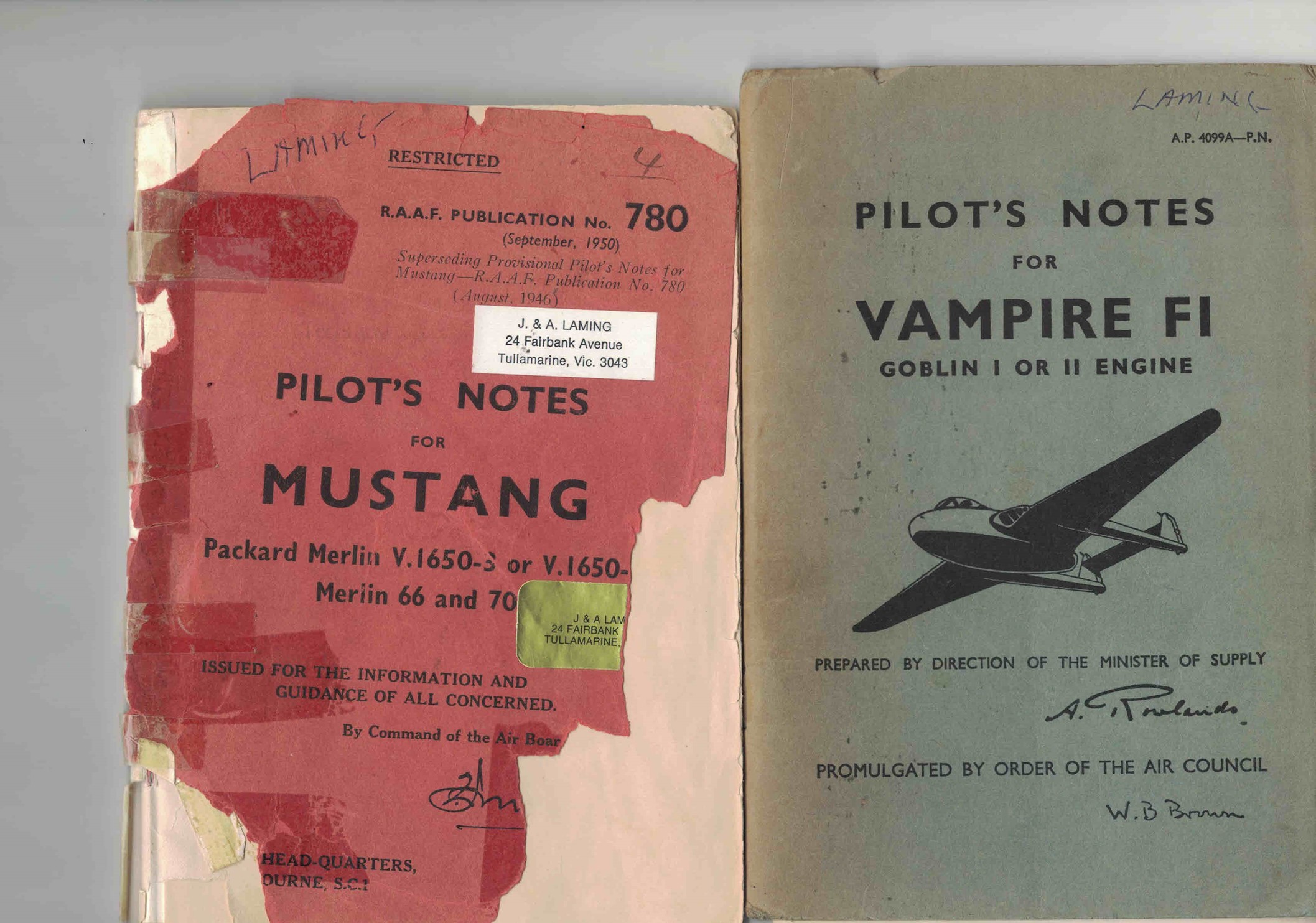
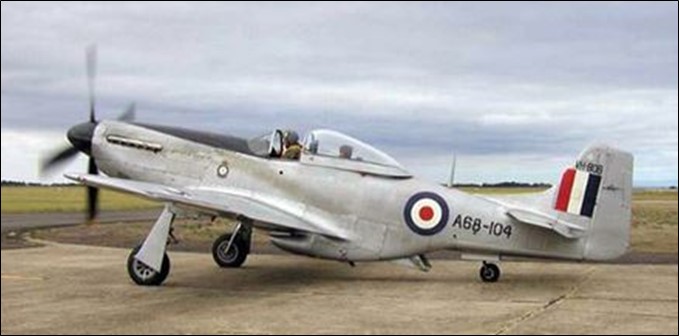
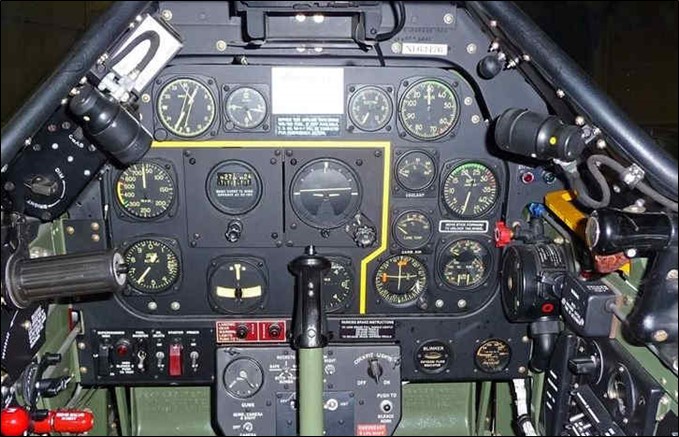
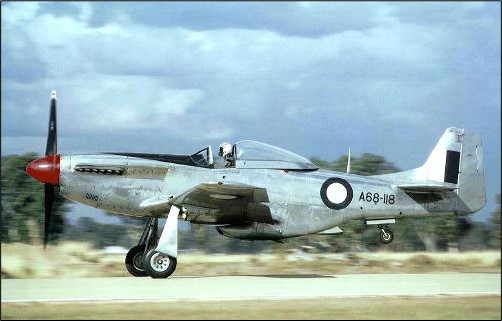
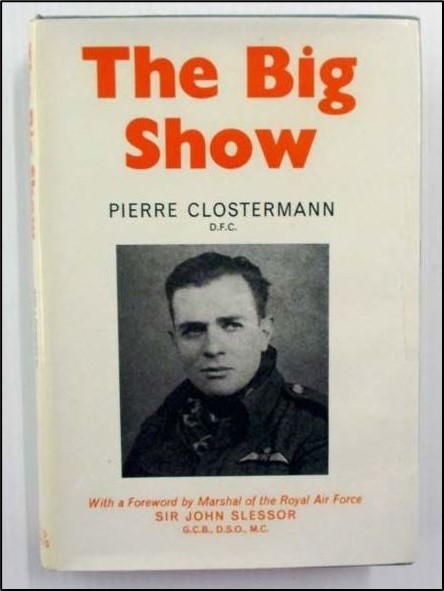
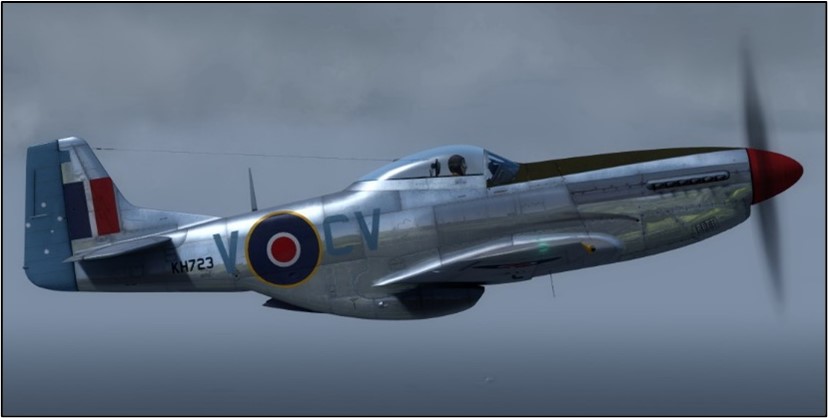
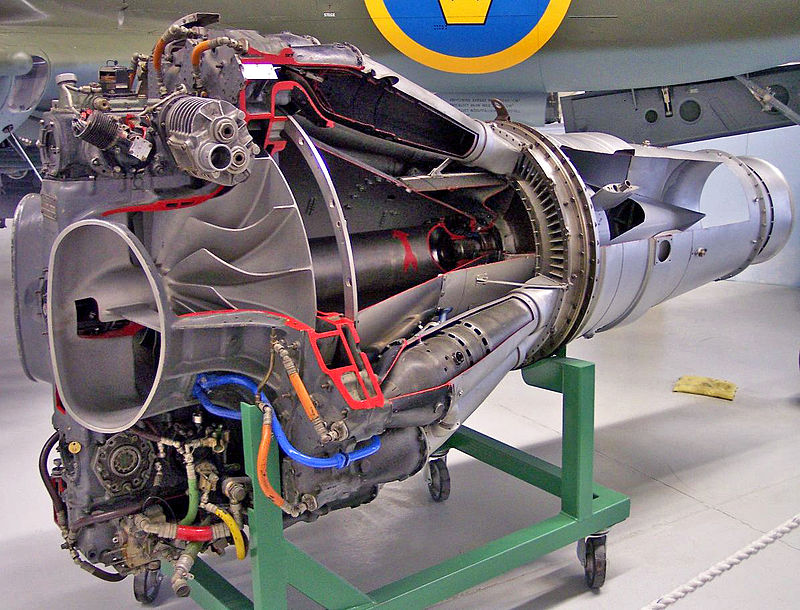
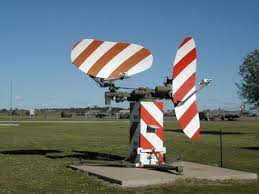
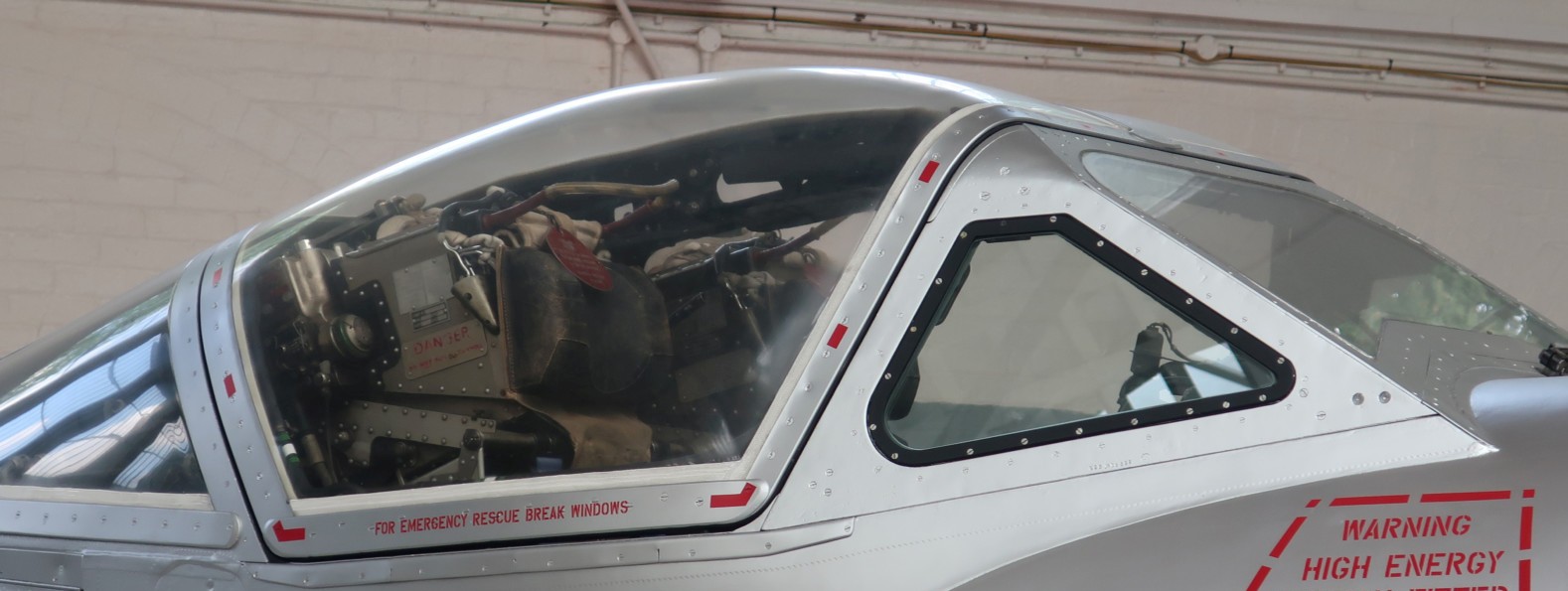
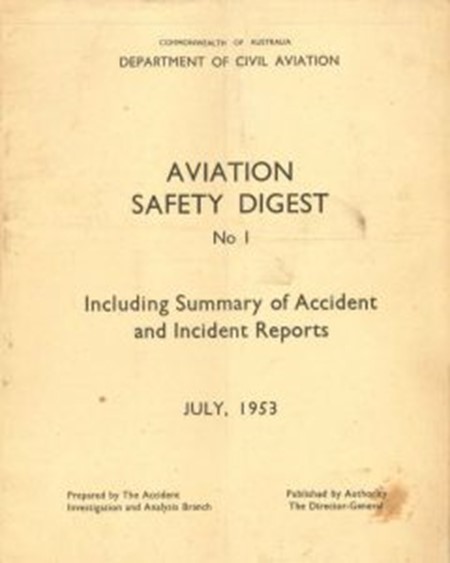
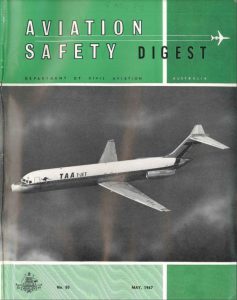 draw worthwhile conclusions from accident statistics alone. The Branch
therefore saw a need for some system of industry report, not only for
actual accidents, but for any instance in which the safety of an
aircraft was compromised. Thus the air safety incident reporting system,
then unique to Australia, was born – the infamous 225!
draw worthwhile conclusions from accident statistics alone. The Branch
therefore saw a need for some system of industry report, not only for
actual accidents, but for any instance in which the safety of an
aircraft was compromised. Thus the air safety incident reporting system,
then unique to Australia, was born – the infamous 225!